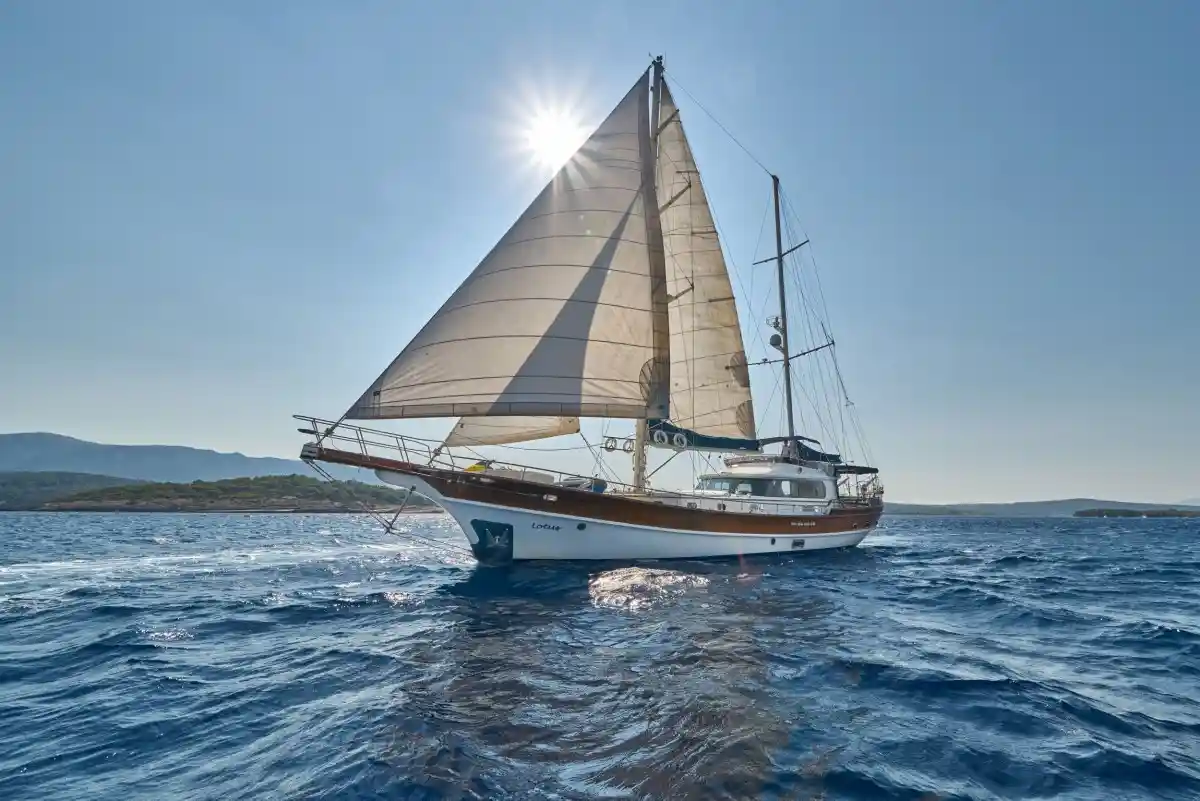When you see a sailboat slicing through the water, it’s the masts and sails that often catch your eye. If you see a boat with two masts and wonder what is a boat with two masts called, the answer isn’t as straightforward as you might think.
The name of a boat with two masts can vary based on the arrangement and size of the masts. Next time you’re checking out these sailboats, you’ll know exactly what you’re looking at. Isn’t it cool to put a name to what you see? Keep an eye on the masts, and you’ll be a pro at spotting the difference in no time!
Key Takeaways
- Yawls and Ketches are the most common types of two-masted sailboats.
- Yawl: Two masts, with the smaller mizzenmast behind the boat’s steering wheel.
- Ketch: Two masts, with the mizzenmast ahead of the steering wheel and smaller than the mainmast but still relatively tall.
What Is A Boat With 2 Masts Called?
If the extra mast is in front of the main mast, it is called a foremast, but if the additional mast is behind the main mast, it is called a mizzen mast.
Let’s review these two-masted sailing boats, starting with the ketch:
1. Ketch
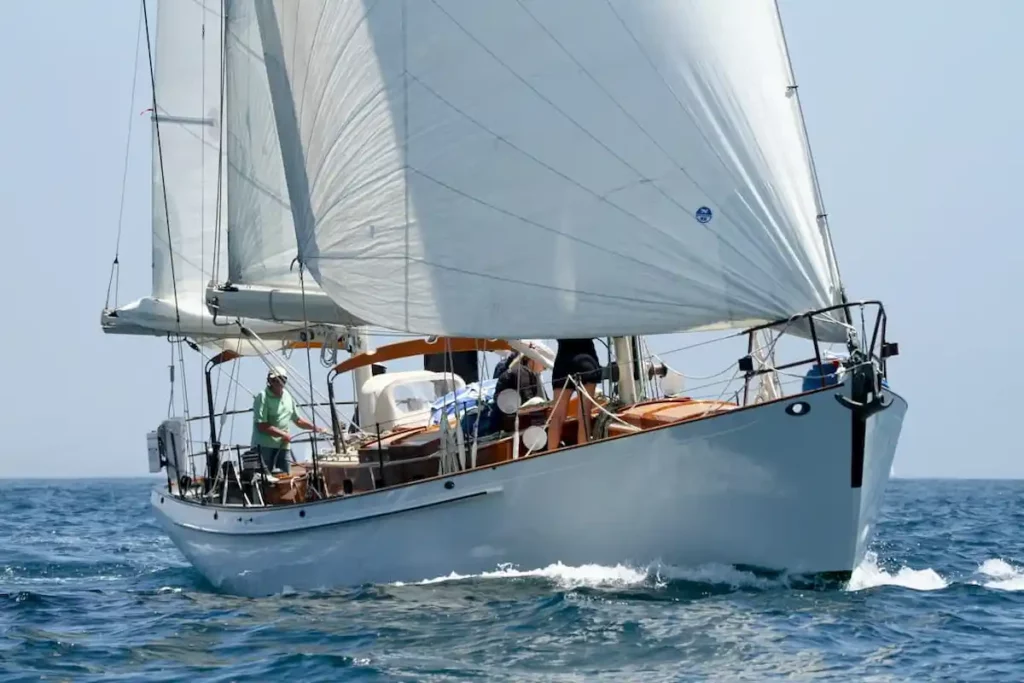
Image credit: American Sailing Association
The mizzen mast of a ketch is almost as high as the main mast. The mizzen supports the mainsail. However, its primary function is to propel the sailboat forward, and it can sail the boat, especially in stronger winds.
This is very different from the mizzen mast of a yawl, which serves only to balance the rudder and not to propel the boat forward.
This means that the mizzen mast of a ketch is larger than that of a yawl. In short, the mizzen mast of a ketch is technically a driving sail, while the mizzen mast of a dinghy is more of a balancing sail.
A ketch usually has an advantage over a sloop in downwind or high winds. This is because there is a greater variety of configurations than a typical sloop.
The mizzen mast gives you many options for depowering in strong winds and finding the perfect amount of sail. It can also help stabilize the sailboat under power, as the mizzen mast is in an excellent position.
A ketch has many practical advantages that can be ideal in most situations on the water. A ketch not only sails smoothly on a beam but is also easy to maneuver and gives you many options in different weather conditions and situations.
2. Yawl
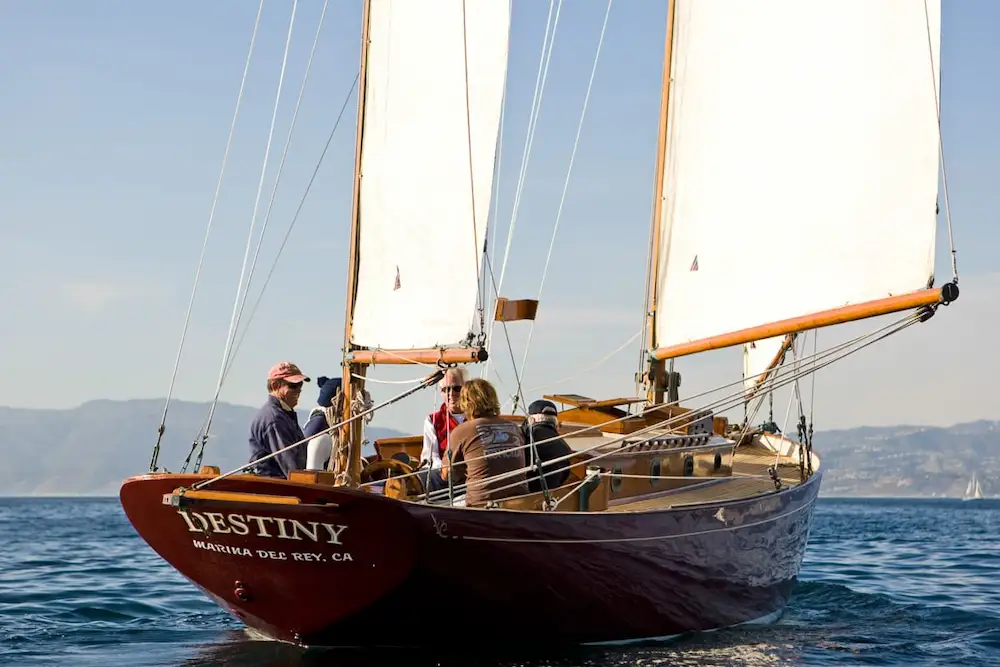
Image credit: American Sailing Association
A yawl is one of the typical two-masted sailing boats. It has two masts: a mizzen mast and the main mast.
The mizzen mast is usually much shorter than the main mast. So, it is a leaning sailboat where the main mast is in the front part of the boat while the mizzen mast is in the back part.
The mizzen mast of a yawl is used to improve the balance of the rudder and is located aft or behind the rudder.
It is easy to confuse a yawl with a ketch. Both have two masts, the main mast forward and the smaller mizzen mast.
The difference between a ketch and a yawl is the position of the mast. In a yawl, the mizzen mast is behind the rudder, while in a ketch, it is in front of the rudder.
3. Brig
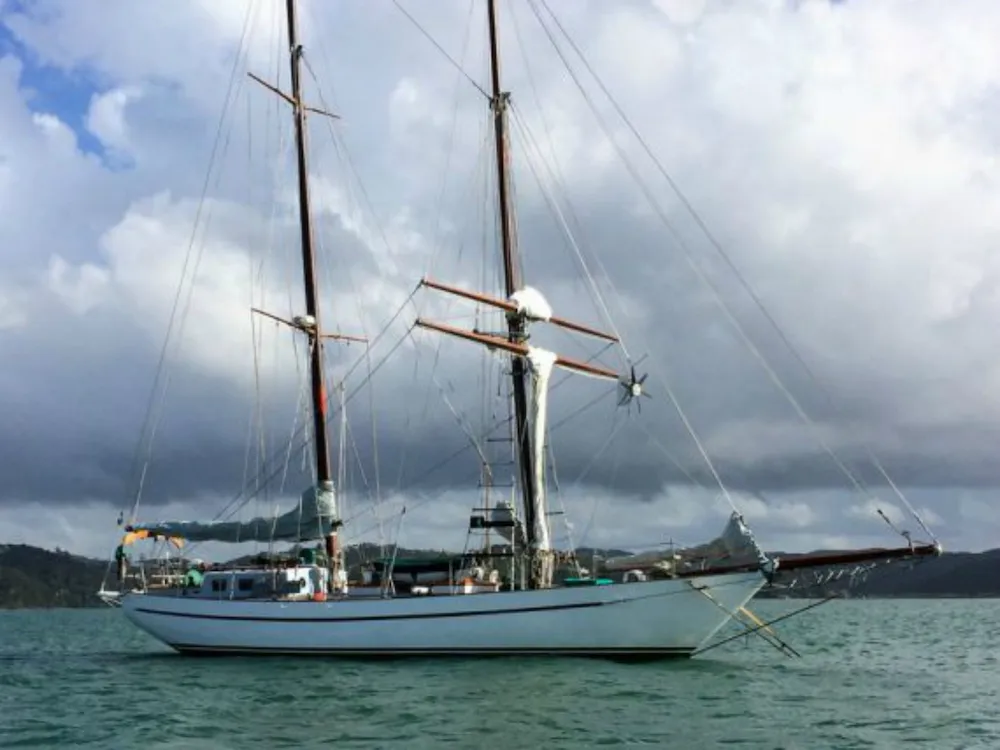
Like the two-masted sailing vessels mentioned above, the brig has two masts with a square main mast. The main mast can be square, partially square, or triangular. Some brigs have a battened mainsail on the main mast.
Historically, brigs were used by pirates. Their name derives from the Italian word “brigantine,” which translates to “pirate.” This type of sailing vessel was used by Mediterranean pirates in the 16th century before being converted into sailing ships.
The two common types of brigs:
- Brigantine: The foremast is usually partially square, while the main mast is triangular.
- Hermaphrodite brigantine: Also known as a schooner brig or half brig. The two masts are partially square, but the main mast is a gull and topsail, making it a half schooner.
In terms of speed and maneuverability, brigs are easy to handle and maneuver, which is why they were favored by pirates
Again, brigs tend to be larger than other two-masted or single-masted sailing vessels.
4. Schooner
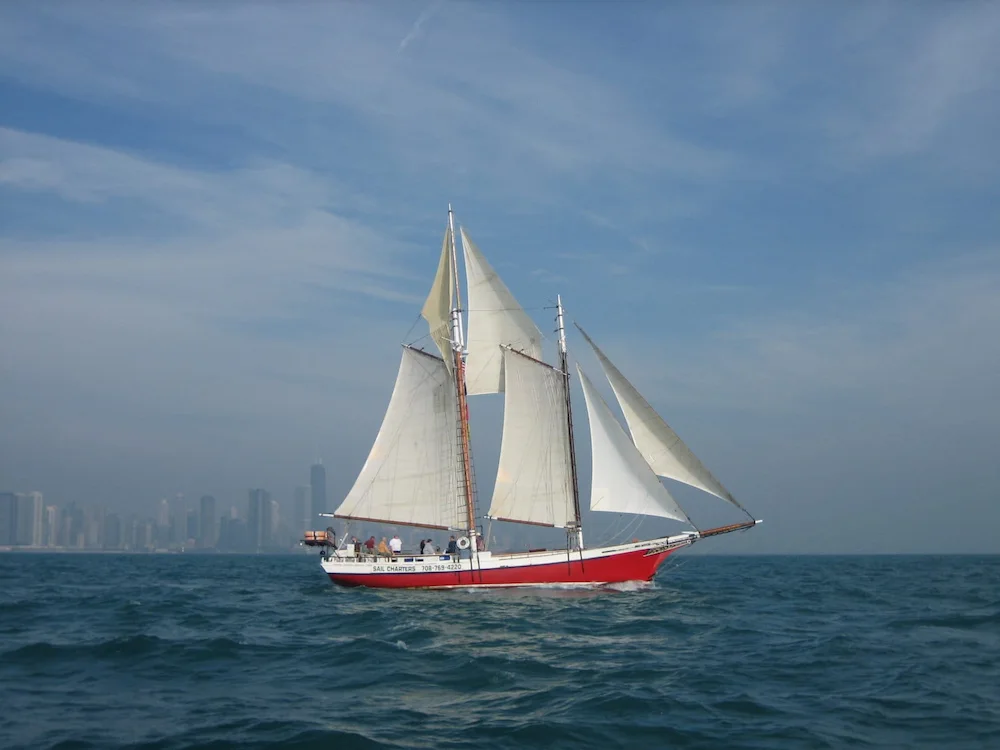
Image credit: American Sailing Association
In a two-masted schooner (a schooner can have two or more masts), the bow mast is usually smaller than the stern mast, which is the main mast.
Therefore, the main characteristic of a schooner is that the masts are about the same height, but the foremast is slightly smaller.
While a schooner is easier to sail than a sloop or a single-masted sailboat, it is not very fast. For this reason, most sailors prefer a sloop to a schooner, but it is a beautiful sight, especially when sailing under full sail.
Although the schooner with a square topsail is the most common, there are also vessels with diagonally set spritsails.
Schooners with spritsails are not ideal in the larger seaways because the spritsail rig cannot be lowered, or it will become unmaneuverable.
On the other hand, the spritsail rig is ideal for coastal waters because the topsail can take a strong breeze.
Popular Two-Masted Sailboat Models
When you’re looking at two-masted sailboats, you’ll see that there are a few models that stand out from the rest. Each has its own charm and is known for certain features.
Hinckley Bermuda 40
This classic beauty is all about elegance on the water. Since the 1960s, sailors have loved its smooth sailing and comfy inside. Its two masts, including a shorter mizzenmast at the back, make it a yawl and a real eye-catcher at sea.
1976 Westerly Center Cockpit Ketch
This is for those who want a sturdy sail around. It’s a smaller sailboat at 36 feet, but don’t let that fool you. This ketch is well-built and comes with a center cockpit design. Plus, it has a 38 horsepower engine to help you steer through quieter waters.
Nicholson 38
A solid choice for ocean voyaging, the Nicholson 38 has earned its stripes among sailors. It’s one of those boats that balance size and handling, making your sailing both comfy and thrilling.
Bayfield 40
Sleek and ready for long trips, the Bayfield 40 has a dedicated following. It’s got the room you need for those longer adventures and sails that catch the wind just right.
Amel Super Maramu
A favorite for those who eat, sleep, and breathe sailing. It’s built to face the ocean’s moods and keep you safe and sound.
What About Performance and Handling?
When you’re steering a two-masted boat, a few things become really important: how it balances, how it zips through different breezes, and the kind of sharp turns you can pull off.
Balance and Stability
Your boat’s balance and stability depend a lot on how the masts are set up. If your mainmast and mizzenmast are aligned just right, you’ll feel the boat sit pretty steady on the water.
It’s like a seesaw. Get it balanced and your ride’s going to be smooth.
Sailing in Different Wind Conditions
Different winds? No problem. The two masts give you more options to set your sails.
When the wind’s blowing like crazy, you can adjust the sails so you’re not overpowered. And on those lazy breezes, you can catch just enough wind to keep gliding.
Speed and Maneuverability
Want to go fast? That second mast can help, especially when you want to zip around quickly. It helps you turn on a dime and keeps things spry.
But remember, your crew needs to be on their toes, because handling all those sails takes skill and a keen eye.
See Also:
